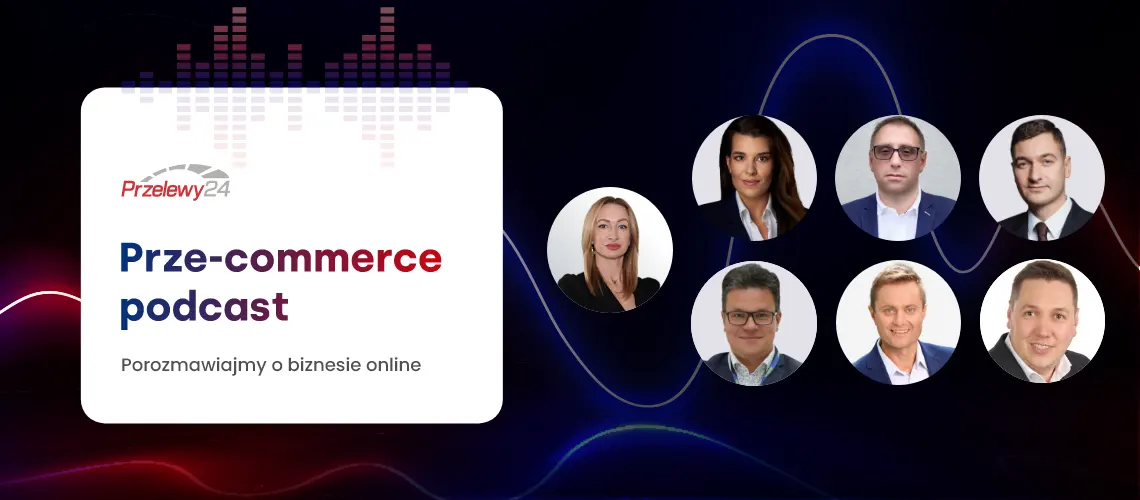Published: September 11, 2025 | Last updated: September 11, 2025
Sales without discounts is a strategy based on building long-term brand value, customer loyalty, and optimizing marketing communication without relying on periodic price cuts.
In a highly competitive environment and decreasing e-commerce margins, many online store owners – both in Poland and abroad – use discounts as their primary sales tool. It's a short-term stimulus that often works... but only once.
Continued use of discounts leads to brand value erosion, loss of loyal customers, and dependency on ever-increasing promotional levels. Moreover, discounts attract transactional customers, not those who will build a strong and profitable community around your brand.
In this article, we’ll show you how to sell without discounts, step by step. You’ll learn how to use emotion in e-commerce, build an effective pre-sale campaign, and how social media can drive your conversions without markdowns.
Table of Contents
- Why Discounts Can Harm Your Brand and How It Works
- How to Change Strategy: Selling Without Discounts as a Competitive Advantage
- Pre-Sale Campaign – 5 Steps to Effective Customer Activation
- Emotion in Sales: How to Use Curiosity, Tension, and FOMO Instead of Discounts
- Social Media in E-commerce: How to Turn Them Into a Channel of Influence
- Alternatives to Discounts: 7 Tactics That Boost Conversion and Loyalty
- FAQ – Frequently Asked Questions
- Summary: How to Start Selling Without Discounts?
- Selling without discounts requires a focus on customer loyalty and added value.
- Pre-sale campaigns and social media create emotions that drive conversions.
- Alternatives to discounts – such as freebies, loyalty programs, and FOMO – increase profit and brand prestige.
- Marketing strategies based on emotion instead of price raise brand value and customer trust.
Why Discounts Can Harm Your Brand and How It Works
At first glance, discounts seem like an obvious solution to poor sales results, but long-term use brings several side effects:
- Brand value erosion – If your product is constantly discounted, customers stop perceiving it as worth its full price. The discount becomes the norm, not a perk.
- Lowered quality perception – Lower prices may signal lower quality, which negatively affects brand perception.
- Lack of loyalty – Occasional customers focused only on discounts won’t stick around long term.
- Price pressure – You force yourself to offer deeper discounts just to match last year's sales figures.
As shown in a Deloitte study (2024), retail brands reliant on discounts saw 31% lower margins in Q4 compared to those focused on added value creation.
How to Change Strategy: Selling Without Discounts as a Competitive Advantage
The no-discount model doesn’t mean giving up effectiveness. It means shifting sales from transactional to relational.
Elements of an Effective "No Discount" Strategy:
- Brand value building – Tell your brand’s story. Why does it exist? What makes your approach to customers unique?
- Customer loyalty – Nurture returning users through positive shopping experiences and engaging loyalty programs.
- Product exclusivity – Limited editions, influencer collaborations, and upgraded experiences instead of discounts.
- Pre-sale campaign – Instead of "discount drops," build anticipation and excitement through social media.
- Engaging social media – Show team involvement, customer experiences, and the values you represent.
Good to know:
Loyalty programs and emotional campaigns may drive better sales performance than a one-time 20% discount. The key is to build a lasting relationship and anticipation.
Pre-Sale Campaign – 5 Steps to Effective Customer Activation
The pre-sale framework involves planning your campaign in advance, focusing on building anticipation, engaging via social media, and activating the community just before launch.
Campaign Stages:
- Warm-up phase – Inspirational content, educational material, storytelling. No selling yet.
- Teasers – Short and mysterious messages that spark curiosity ("New. Intriguing. Coming soon.")
- VIP list – Early access signups via newsletter or private group.
- Countdown – Countdown visuals + influencers or ambassadors to build tension.
- Grand finale – A strong launch: live session, inspiring video, limited-edition gift “only today”.
This model ensures that you are competing on emotion, not price. The customer doesn’t “buy cheaper” – they buy because they want to be first, love your brand, or want to be part of a community. And that comes at full price.
Emotion in Sales: How to Use Curiosity, Tension, and FOMO Instead of Discounts
One of the foundations of selling without discounts is emotion management. By selling emotions, you can bypass price without losing conversions.
What emotions should you create?
- Curiosity – enigmatic teasers, wordplay, subtleties.
- Tension – countdowns, dynamic messaging, increase campaign intensity before launch.
- FOMO (fear of missing out) – stock limit, exclusive availability, "only today," "for VIP list members only."
Practical Example:
A jewelry brand launched a new collection with the slogan “BONA, it works.” Countdown, mysterious taglines, a private list of the first 100 customers, gift available only on launch day. Result: the collection sold out in 48 hours – without a discount.
Social Media in E-commerce: How to Turn Them Into a Channel of Influence
E-commerce social media profiles shouldn’t act as bulletin boards. They should be relationship- and education-driven channels.
Strategies:
- Deliver value – educational, entertaining, lifestyle content instead of "buy now."
- Build brand personality – showcase people, mission, story, behind-the-scenes processes.
- Engage – reactions, comments, contests, open-ended questions, live sessions.
Top brands use emotional storytelling and lifestyle content to hold audience attention. The combo of storytelling + authenticity is the most cost-effective way to increase organic reach.
Alternatives to Discounts: 7 Tactics That Boost Conversion and Loyalty
A list of actions you can implement instead of price reductions:
- Freebies – e.g., mini-product, add-ons. Builds value without hurting price perception.
- Bundles – grouping products into value-added sets.
- Personalization – engraving, samples, extended warranties as bonuses.
- Loyalty programs – early access to releases, birthday gifts, point systems. Example: Starbucks Rewards.
- Limited editions + influencers – exclusive products generate FOMO and emotion.
- Free shipping/services – e.g., express delivery, gift wrapping, easy returns.
- BNPL (Buy Now Pay Later) – allowing installment payments. Especially helpful with higher-priced items.
FAQ – Frequently Asked Questions
1. Can I completely stop offering discounts?
Yes, but only if you build a strong brand identity and invest in customer relationships. Discounts can complement your strategy, but shouldn’t be the core.
2. Can a loyalty program work without discounts?
Yes. It’s important that the points, perks, and access to releases are genuinely valuable. Examples: Sephora, Starbucks, Lululemon.
3. What if my competition keeps discounting?
Instead of joining a price war, focus on your edge — e.g., quality service, personalization, exclusivity. Good storytelling and emotional connection beat discounts.
4. Which social platforms work best without promoting discounts?
TikTok and Instagram Reels via storytelling and short lifestyle videos. LinkedIn lets you tell your brand values. Facebook is great for community building.
5. Should I offer freebies and limited editions together?
Yes, combining a limited set + exclusive gift for first customers works brilliantly. The customer feels they receive something special – without a discount.
Summary: How to Start Selling Without Discounts?
Selling without discounts is a long-term game focused on loyalty, prestige, and better margins. You don’t give up effectiveness – you change the mechanics.
Key actions:
- Create a pre-sale campaign – teaser, VIP list, LIVE launch.
- Leverage emotion: curiosity, tension, FOMO.
- Strengthen social media as a communication channel, not just advertising.
- Replace discounts with other conversion tools – loyalty programs, BNPL, free shipping, personalization.
People don’t just buy price – they buy relationships and experiences. That’s why your brand must speak the language of value, not promotion.
Sources: Deloitte, UOKiK, Canva, Justuno, Human Nature Creative Co, adQuadrant



